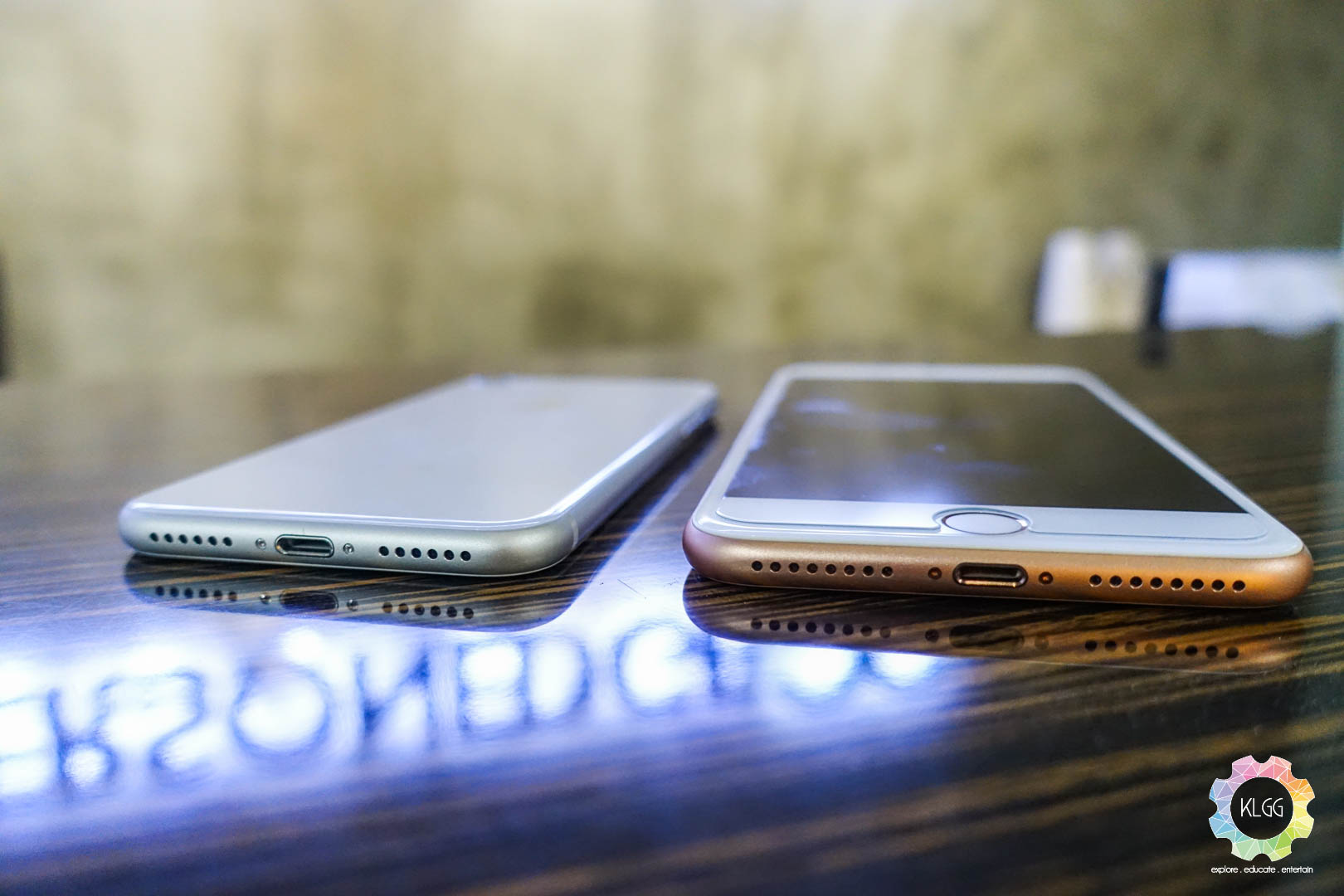I have been actively using both the iPhone 8 and 8 Plus for the past few weeks, many of my friends posted the same question to me – why does these two phones matter when there’s an iPhone X? First, the iPhone 8 isn’t a bad phone, no doubt it still uses the four year old surfboard design that we have been so accustomed to, but it is still a form factor that easily appeals to one that wants a new iPhone. Second, it is still the fastest performing iPhone you can own if you are not prepared to spend a lot of cash for the iPhone X. Lastly, it is the new iPhone for those who doesn’t require Face ID or a thin-bezel display. But, for all of these reasons, is it worth the purchase?
Just like the last three generations of iPhones, Apple lets you choose between a smaller and larger device. For the first time, I actually like the fact that Apple has used glass for the iPhone’s back, not just because of wireless charging, it also gives the phone a better grip which I find it less prone to dropping when compared to my iPhone 7 Plus. As a matter of fact, the glass back made the iPhone 8 and 8 Plus heavier than their predecessors though not significant, I like the sturdiness and haven’t got too frustrated about it. However, a glass back also mean that you will have to worry about cracking the glass, though Apple says that it is the strongest glass they have ever sourced, ultimately it is still glass. Period.

Speaking of audio, Apple has greatly improved the speakers on both the iPhone 8 and 8 Plus with a more dynamic soundstage and 25% louder volume, I can certainly vouch for that as I used it almost every day for playing my Spotify playlist, especially on the iPhone 8 Plus’ dual speakers, bass response is extremely punchy with great clarity even at max volume, I would even go as far to say that it is even much better than most laptop speakers.
What makes every new iPhone truly impressive is the performance improvements over the previous model, the iPhone 8 and 8 Plus are powered by the A11 Bionic chip, which is also present on the iPhone X, it is a hexa-core configuration that comprises of two high performance and four high efficiency cores, which in this case makes it much faster and efficient than the A10 Fusion.
iOS 11 requires no further introduction for avid iPhone users, as you are still getting the very same user experience as previous iPhones, the new App Store is great at recommending apps with stories from developers, you get a new notifications screen that you either love or hate, the pages you have to go through gets annoying as you install more apps, and the new Control Center can be pretty useful for toggling settings with 3D Touch.
There is however one feature that I find iOS to still perform better than Android – the soft keyboard, like it or not, despite the numerous annoying times it auto-corrected my words, it works great with the ability to select words by simply holding and swiping on it, and it gives me dedicated keys to @ and # when I’m writing a post on Instagram or Twitter. Also, if you own other Apple products, such as a Mac or iPad, iOS still does the best when it comes to syncing and handing off tasks to these devices, and it has gotten more reliable on iOS 11.
[fshow url=https://flic.kr/s/aHskrRGEuo]
I have managed to put it to the test with the Huawei Mate 10 and Galaxy Note 8, which you can view in the image samples down below. In my tests, the iPhone 8 and 8 Plus has certainly improved when it comes to details and noise levels, the camera software tends to keep colors vibrant but also keeping them close to real life colors, the improved photography capabilities can also be attributed to the A11 Bionic’s ISP.
iPhone 8 Low Light Camera Samples
[fshow url=https://flic.kr/s/aHsma2zQvP]
Huawei Mate 10 Low Light Camera Samples
[fshow url=https://flic.kr/s/aHsma2zQvi]
Galaxy Note 8 Low Light Camera Samples
[fshow url=https://flic.kr/s/aHsma2zQug]
What’s also new on the iPhone 8 and 8 Plus camera capabilities is the support for recording 4K 60 fps videos with stabilization, it is the only phone camera capable of doing so at the moment, which you can record extremely clear footage and view them in buttery smooth frame rates if your computer could handle it.
Although the iPhone 8 and 8 Plus finally support fast charging, Apple hasn’t included the 29W adapter and USB-C to Lightning cable in the box, which will cost RM348 of damage if you want that and it is just ridiculous. I was lucky to have the 29W adapter that came together with my 12-inch MacBook, hence I was able to try that out by merely purchasing the cable, I have to admit that it is the most expensive data cable I have purchased in my entire lifetime, but it is worthwhile when you can quickly give the iPhone a 50% charge in merely 30 minutes. However, I really think Apple should stop bundling that 5W charger and standard Lightning cable in the box, considering that users are already paying a premium for the iPhone 8, the fast charging package should come as a standard like Android smartphones.
Verdict
The Good
- Great performance
- Improved camera system
- Wireless charging
- 4K 60 fps video recording a dream for content creators
The Not So Good
- Expensive
- Quick charger and cable not included
- Outdated design

